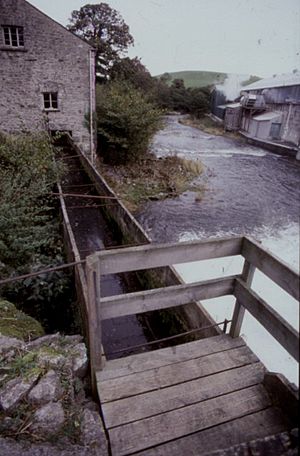Heron Corn Mill facts for kids
The Heron Corn Mill is a cool old building in Beetham, Cumbria, England. It's an 18th-century water mill that still works today! It sits right on the River Bela. A water mill uses the power of flowing water to turn big wheels and grind grain into flour.
This mill and its special water channel, called a mill race, are very important. They are listed as a Grade II* building, which means they are historically significant. Back in 2013, the mill got a big grant of £939,000 from the Heritage Lottery Fund. This money helped them do major repairs and keep the mill in great shape.
Contents
Visiting the Mill
The Heron Corn Mill is open for people to visit. You can often see how flour is made, just like it was hundreds of years ago! It's a great way to learn about history and how things used to be done.
Community and Learning
There's also an old barn from the 18th century on the mill site. This barn is used for lots of fun things. It hosts community events and educational activities for people of all ages. It's a place where everyone can learn and get together.
How the Mill Helps the Environment
The mill doesn't just make flour; it also helps the environment!
Making Clean Energy
Inside the mill site, there's a special machine called a Kaplan turbine. This turbine uses the power of the river to make hydroelectricity. Hydroelectricity is clean energy made from water. Some of this electricity is even sold to a paper mill across the river. This shows how old technology can work with new ideas to help our planet.
Helping Fish Travel
There's a special path called a fish ladder built around the weir (a small dam) on the river. This ladder helps salmon swim past the weir easily. It allows them to travel upstream to their breeding grounds. This is super important for keeping the fish population healthy.
See also
- Grade II* listed buildings in Westmorland and Furness
- Listed buildings in Beetham
External links
- Charity Commission. Heron Corn Mill (Beetham) Ltd, registered charity no. 1131677. https://apps.charitycommission.gov.uk/Showcharity/RegisterOfCharities/SearchResultHandler.aspx?RegisteredCharityNumber=1131677.


